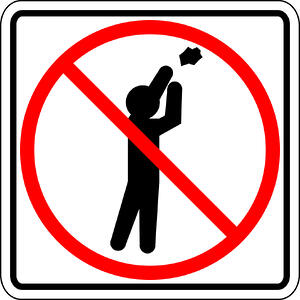 For many professionals, moisture meters are an indispensable tool. With these handy devices, contractors can better adhere to ASTM F-2170 standards, woodworkers can make sure that their lumber is properly acclimatized, and farmers can monitor soil conditions as well as moisture in hay bales. Other uses for moisture meters include:
For many professionals, moisture meters are an indispensable tool. With these handy devices, contractors can better adhere to ASTM F-2170 standards, woodworkers can make sure that their lumber is properly acclimatized, and farmers can monitor soil conditions as well as moisture in hay bales. Other uses for moisture meters include:
- Home inspection.
- Water damage restoration.
- IAQ (Indoor Air Quality) control.
- Pest control.
This is just a small list of the uses for moisture meters. With a rugged, reliable moisture meter, professionals in a number of different industries can get the moisture data they need to overcome on-the-job challenges.
However, even the most rugged and reliable tools can be quickly rendered useless if not used and taken care of properly. With this in mind, we’ve assembled a list of things that you should never do to your moisture meter if you want to keep using it on the job:
#1: Never Leave the Meter in an Active Kiln
Kiln-drying is an integral part of the woodworking process. By drying wood in a kiln, woodworkers can ensure that excess moisture does not cause unsightly warping or other defects in the final product.
Moisture meters can be a highly useful tool for making sure that the kiln-dried lumber is actually dry. However, it is important to note that a moisture meter should not be left in a hot kiln. Extreme temperatures can cause damage to sensitive electronics, and moisture meters are no exception. Even if there are no outward signs of damage or charring, the circuitry inside the meter can become damaged.
It is important to note that short-term exposure, such as what happens when you would walk into a kiln to take a quick reading, usually shouldn’t be a problem for a well-made moisture meter. The real problem occurs when a meter is left inside of a hot kiln.
There are moisture meters that are designed to monitor moisture conditions inside of an active kiln, though most of these actually plug into sensors integrated into the kiln from the outside, such as the KIL-MO-TROL.
#2: Never Submerge the Meter in Water
 While moisture meters are designed to detect moisture, they aren’t meant to actually be submerged in water. When water gets inside the unit, whether it’s a pin-type, pinless, or a thermo-hygrometer, it can damage the circuit boards inside the unit and cause it to short-circuit just like any other piece of electronics.
While moisture meters are designed to detect moisture, they aren’t meant to actually be submerged in water. When water gets inside the unit, whether it’s a pin-type, pinless, or a thermo-hygrometer, it can damage the circuit boards inside the unit and cause it to short-circuit just like any other piece of electronics.
This may sound like an obvious piece of advice, but you might be surprised at how often water damage comes up as the cause of a moisture meter malfunction.
For pinless and pin-type meters, excessive moisture on the reading element (contact pins for pin meters, scanning plate for pinless) can cause corrosion if left alone for too long. Combat this problem by cleaning the reading element after use. Doing so can prolong the useful life of the meter, and keep it accurate.
#3: Never Take Your Meter Apart
Many manufacturers recommend that you don’t take your electronic devices apart to try to fix problems yourself. There’s actually a good reason to follow this advice: it is possible to actually do more damage to the inside of the device simply by trying to open it.
Most moisture meters are designed to be sealed. Opening up the device in a non-sterile environment exposes the PC board to contaminants which can cause it to degrade. Attempting to move or modify parts inside the unit is also something we recommend you avoid.
Instead, try calling the manufacturer’s moisture meter support line or checking their website’s FAQs to see if the problem you’re experiencing has a solution that doesn’t involve cracking open the casing. If not, send in the unit for repairs. The manufacturer should be able to fix the problem, and if not, they can replace it. This assumes, naturally, that the moisture meter is still under warranty (and most warranties are voided by opening the casing of the device).
#4: Never Throw Your Meter to Someone Else
 You’d be surprised how many meters (and even other sensitive electronic devices) get sent in for repairs for accidents resulting from someone taking the device and chucking it to another person. All too often, the person on the receiving end doesn’t make the catch, and the device ends up hitting a wall or the concrete just a little too hard.
You’d be surprised how many meters (and even other sensitive electronic devices) get sent in for repairs for accidents resulting from someone taking the device and chucking it to another person. All too often, the person on the receiving end doesn’t make the catch, and the device ends up hitting a wall or the concrete just a little too hard.
This kind of impact can result in cracked casings and loosened or broken circuitry. Damage to the outer casing can allow contaminants into the meter, while damage to the circuitry can cause the meter to malfunction or not work at all.
Also, with meters that have integrated pins, the pins are usually very strong and sharp (they are meant to penetrate solid wood, after all). Because of how strong and sharp they are, these pins can easily cause injury to the person trying to catch it. You wouldn’t throw knives and saw blades across the room to other people, and the same rule should apply to your moisture meters.
It is well worth the extra 3-6 seconds it takes to walk across the room to hand the meter to another person instead of throwing it across the room and risking damage to the meter or harm to the other person.
Keeping Meters Working for Longer
When it comes to maximizing the useful life of your moisture meters, buying a rugged and reliable device is a great help, but that is only the beginning. Take a few minutes to familiarize yourself with the owner’s manual to learn more about the care and use of your moisture meter to learn how you can extend the life of your device.
To learn more about how to care for a Delmhorst product, try contacting our moisture meter support staff for useful tips and advice.
Comments